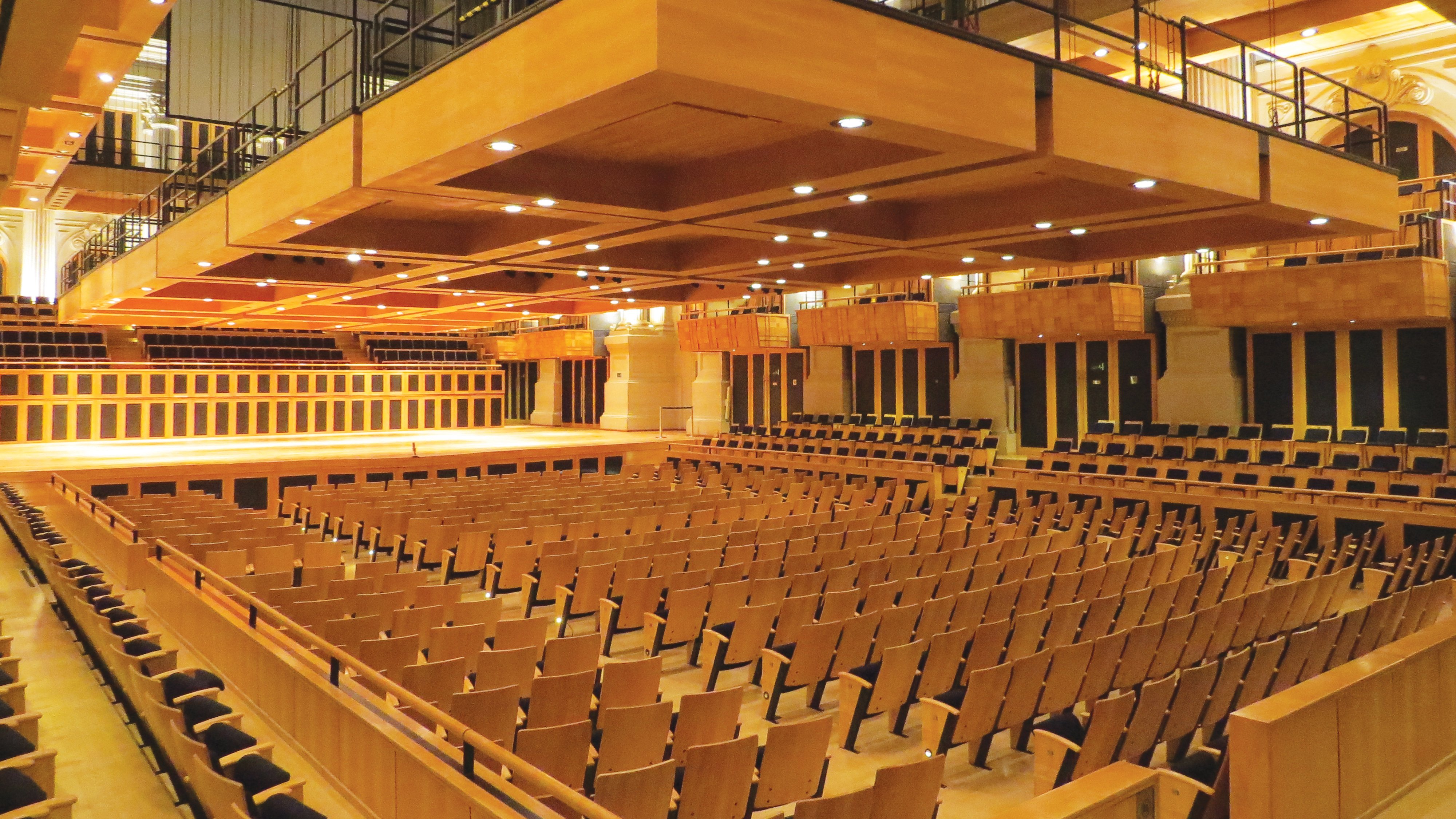Recommended For You
Challenge
- Modernize the roof's moveable panels to allow the hall volume to vary between 12,000 and 28,000 m3
Solutions
Results
- Cost reduction in personnel to operate panels and parts maintenance due to the ability to automatically reconfigure the plug-and-play type drives
- Greater motor efficiency and performance
Sala São Paulo is one of the most important concert venues in Brazil. Located in the center of the capital city, the historic Antigua Estrada de Ferro Sorocabana building is home to the Symphonic Orchestra of the State of São Paulo (Osesp).
Its architectural complex dates back to 1925 and is part of the historical heritage of the city. The Sala was born out of the adaptation and restoration of the Júlio Prestes Station and was inaugurated in July of 1999.
Among its distinctive elements are an adaptable roof, a system that brings elements of the building's original architecture together with new architectural and technological concepts.
The roof of Sala São Paulo rises up 25 meters over the main floor. The roof is comprised of 15 panels weighing 7.5 tons each held in place by 20 cables. Each of the panels can be controlled individually. This allows the volume of the hall to vary between 12,000 and 28,000 m3, guaranteeing that the sound intensity of any composition is preserved.
The entire system is controlled by computers, locks and automatic sensors. In addition, 26 velvet banners can be moved up to eight meters in height in accordance with the necessary vibrations.
Along the roof there is a cover that fits in with the building's original design, but utilizes more modern materials such as thermoacoustic tiles made of polycarbonate.
The Challenge
Recently Sala São Paulo faced issues with the motion system for the panels, which was automated.
Control of this system was done using PLCs and frequency drives manufactured by a company that no longer operates in Brazil. Furthermore, whenever maintenance was required, it was difficult to find spare parts and individuals skilled in that technology, which was obsolete.
Time was lost searching for such individuals and the outstanding sound quality of the venue could be compromised. Faced with this situation, in the second quarter of 2013, Osesp, administrator for the space, searched the market for options to optimize the roof control system.
The Solution
Among the alternatives submitted to Osesp by different companies specializing in automation, the one that stood out the most was Tago Automação Industrial, which, with the support of the authorized distributor Ladder/Edge, proposed a complete reconfiguration of the system.
“Our proposal was selected because it offered the best technical solution according to the assessment of those in charge of mechanical maintenance of the equipment," says Osvaldo Kirst, Manager at Tago.
Tago designed a system with a CompactLogix L33ER controller and 18 PowerFlex 755 frequency drives, ideal for the load-lifting application, as in the case of the roof's moveable panels.
The expectation of Daniela Marcondes, Maintenance and Repairs Manager at Osesp, is “to reduce personnel costs for the operating the panels and maintaining parts since, with the new system, we will have greater motor efficiency and performance.”
One of the most important aspects of this solution, and one that will help Osesp to meet this expectation, is the automatic configuration of the drives (plug-and-play type), which will allow system auto-configuration without the need for experts. This automatic autoconfiguration capability is possible thanks to the ADC (automatic device configuration) function.
The Results
As one of the cultural venues most visited by the public living in the area and tourists visiting the capital, Sala São Paulo had a very short period of time in which it needed not only to replace the system, but also to have it operating perfectly.
In less than 30 days the roof's control system was ready to move in concert with the varied and extensive schedule of Sala São Paulo.
“The ability to meet the schedule established by Osesp was also a deciding factor that resulted in the Tago proposal winning, and that was made possible by selecting our Rockwell Automation technology,” states Kirst.
Platform testing was done at Tago so that once the system was installed at Sala São Paulo, only fine-tuning was needed.
“We knew the Rockwell Automation brand, but we had never worked together before. To date, the company has been meeting our needs very well and product performance is what we expected," says Daniela.
Satisfaction of the end client is a good sign for Rockwell Automation, which could be part of the automation expansion at Sala São Paulo where they intend to integrate the automation of the roof's other control system elements, such as scenery.
Published March 26, 2015

